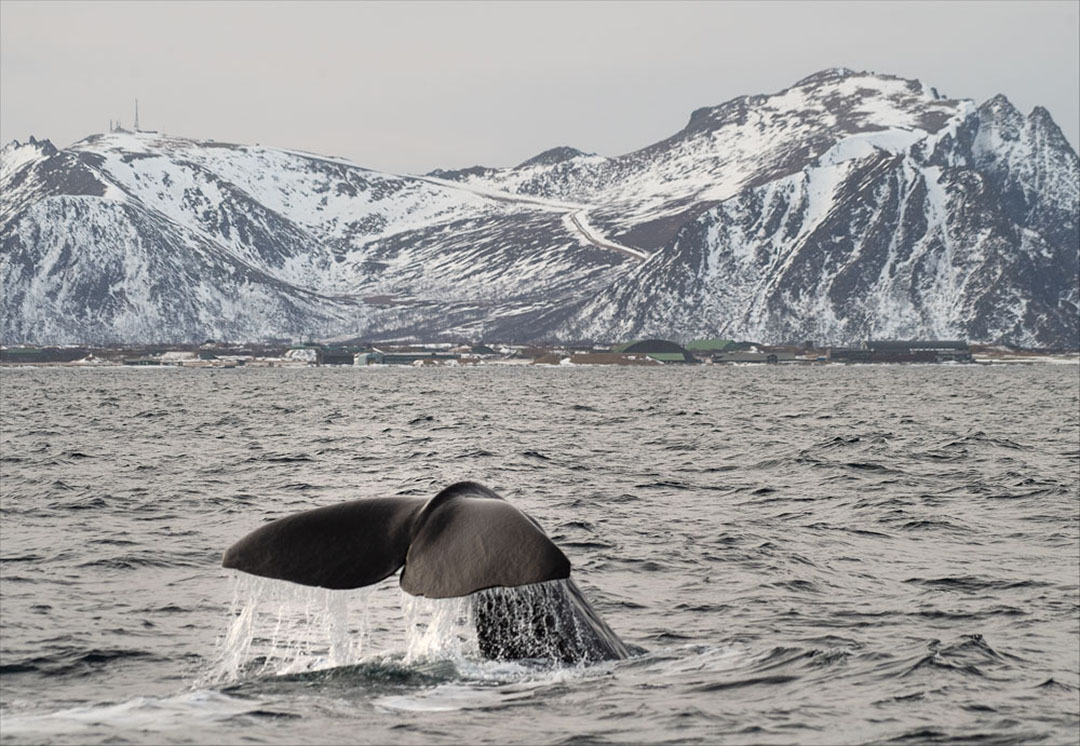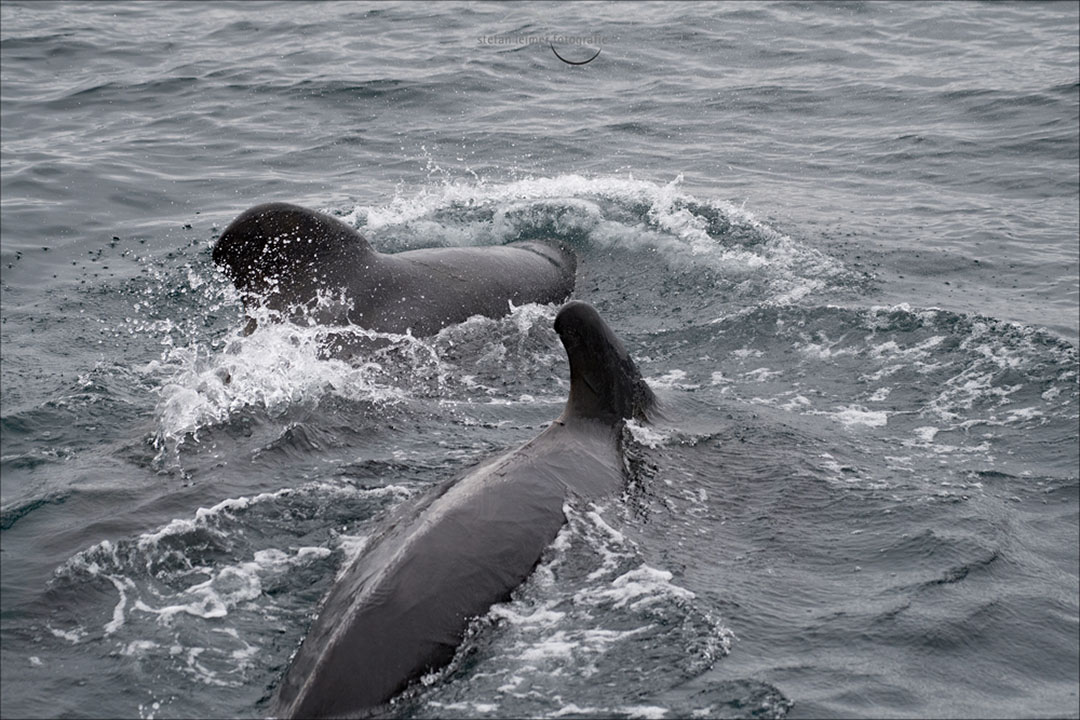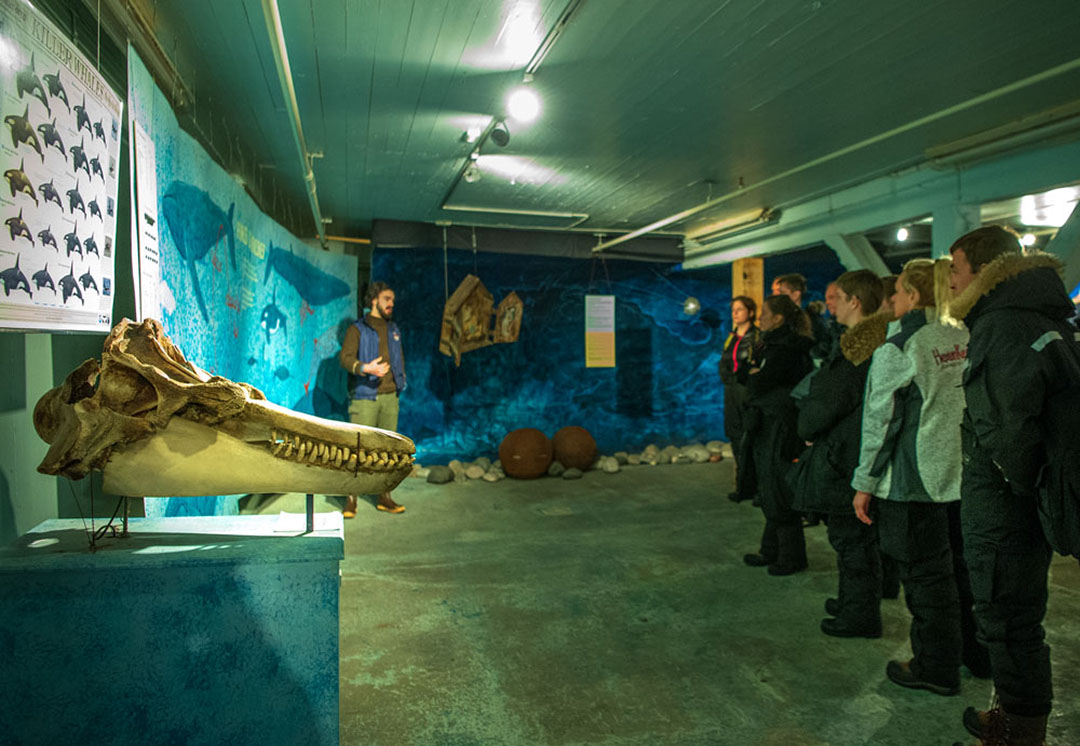
In Andenes, it’s time to cast off again. Since the beginning of June, Hvalsafari AS has resumed regular operations after the forced break caused by Covid-19. Several times a week, the established company makes trips out to the North Atlantic Ocean and introduces enthusiastic tourists to the world of whales.
On June 3, it was finally that time again. The MS Reine left Andenes with a group of Norwegian students on board and set course for the deep-sea trench Bleik Canyon. It was the first whale safari since October 13, 2020 and the forced break caused by the Corona Pandemic.

Whale watching has been conducted professionally on the Norwegian island of Andøya since 1989. The Whale & Dolphin Conservation Society (WDCS), which specializes in evaluating whale safaris, gives Whale Safari Andenes a correspondingly good report card: “Hvalsafari AS is the world’s largest and best operator of Arctic whale safaris”.

The small fishing village of Andenes is located about 300 kilometers north of the Arctic Circle on the island archipelago of Vesterålen and is one of the world’s top locations for whale watching. In the immediate vicinity of the coast, the continental shelf drops steeply and forms the Bleik Canyon mentioned above, which is over 2,000 meters deep. The cold and nutrient-rich waters provide perfect conditions for exceptionally rich and unique wildlife. Sperm whales can be observed here all year round, hunting for their favorite food, squid, in the deep sea canyon. The exclusively male sperm whales stay in the region off Andoya throughout the whole year. The female sperm whales live together with their young in warmer regions further south. But also dolphins and various other whales like pilot whales, minke whales, fin whales and especially orcas regularly visit the region to benefit from the rich food supply. Meanwhile, the internationally recognized whale watching center in Andenes attracts up to 30,000 visitors per year.

Since 2012, whale safaris have also been offered in the winter months from December to March, as more and more nature-loving tourists do not want to miss the unique combination of aurora borealis and whale safaris. Although at this time of the year the sun does not rise in northern Norway and the polar night prevails, the excursions can be carried out under good conditions. Already at 10h00 in the morning the ship leaves the harbor. For successful trips, Captain Geir and his experienced crew use the time window between 11h and 14h to benefit from the then prevailing twilight.

In winter, however, the whales do not usually head towards Bleikcanyon, but eastwards into the Andfjord. Here the whales benefit from the abundant fish supply, as huge shoals of cod cross the fjord on their migration to the spawning grounds further south. As the weather at this time of year is even more unpredictable than the rest of the year, safaris may have to be cancelled. In rough seas and high waves, it is not only unreasonable for tourists to go out, but it can also be dangerous under certain circumstances. One can easily lose one’s balance during the violent ups and downs.

The AG generates a large part of its annual income in the summer season. Especially in the months of July and August, whale watchers from all over the world come to Andoya, resulting in up to four safaris per day. This great workload usually gets Whale Safari Andenes through the months with less tourism.

However, Whale Safari Andenes is financially strong enough to be able to compensate for the financial loss of the winter season 20/21. In addition, a virtue was made of necessity and the excursion ship MS Reine was taken to the shipyard, where it was given a general overhaul and a new coating. Now the former fishing boat shines again, like in its best times.
Even if the travel restrictions are slowly being relaxed again, Sara Mesiti, the person responsible for the organization and implementation of the safaris, is still cautious about the forecasts for the upcoming summer season. The number of bookings for July looks pleasingly good. But as is well known, the account is only settled at the end, when the safaris planned for the Christmas holidays in 2021 have been successfully carried out.

Even though the search took a little longer than usual on the first three trips at the beginning of June. Sperm whales, pilot whales and dolphins were sighted. So there is nothing to stop Whale Safari Andenes making another 30 years of successful whale watching history.






